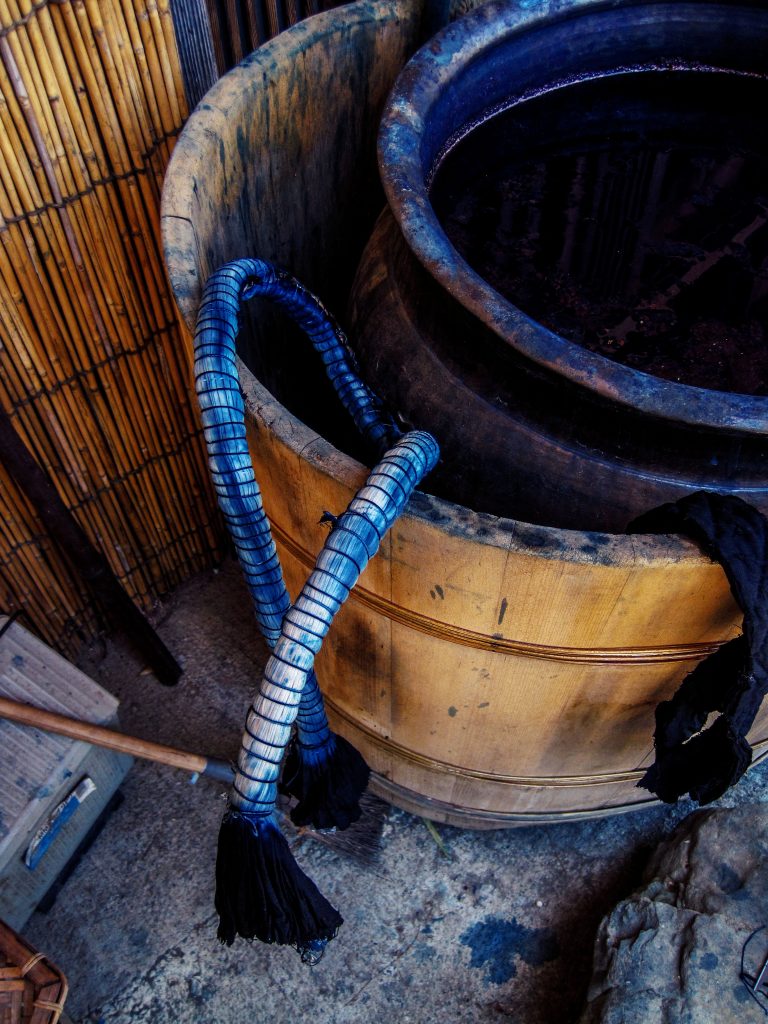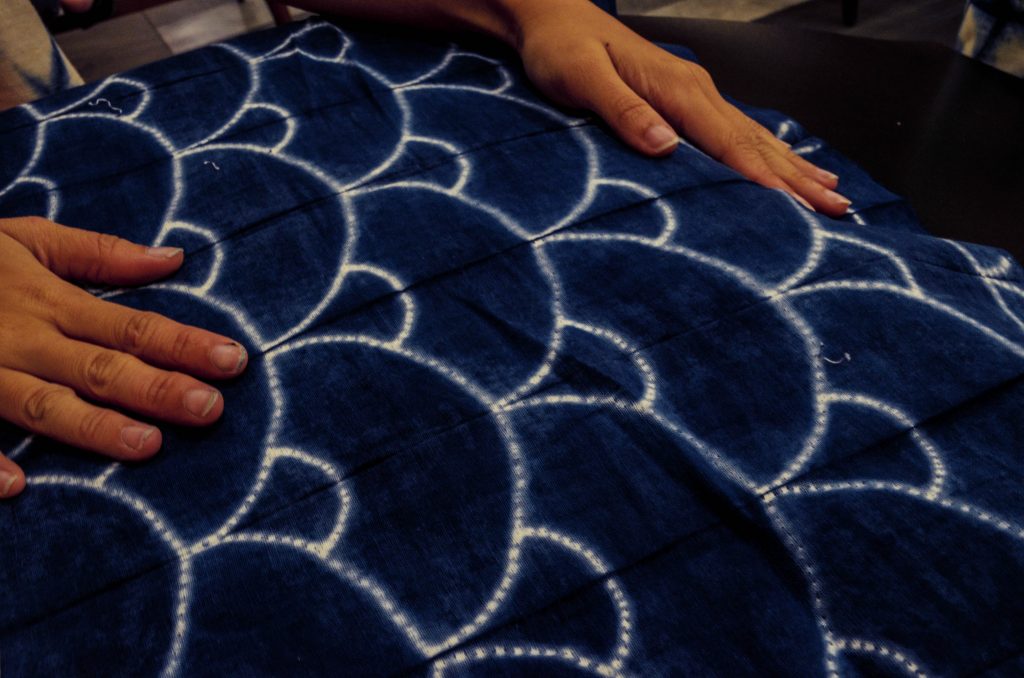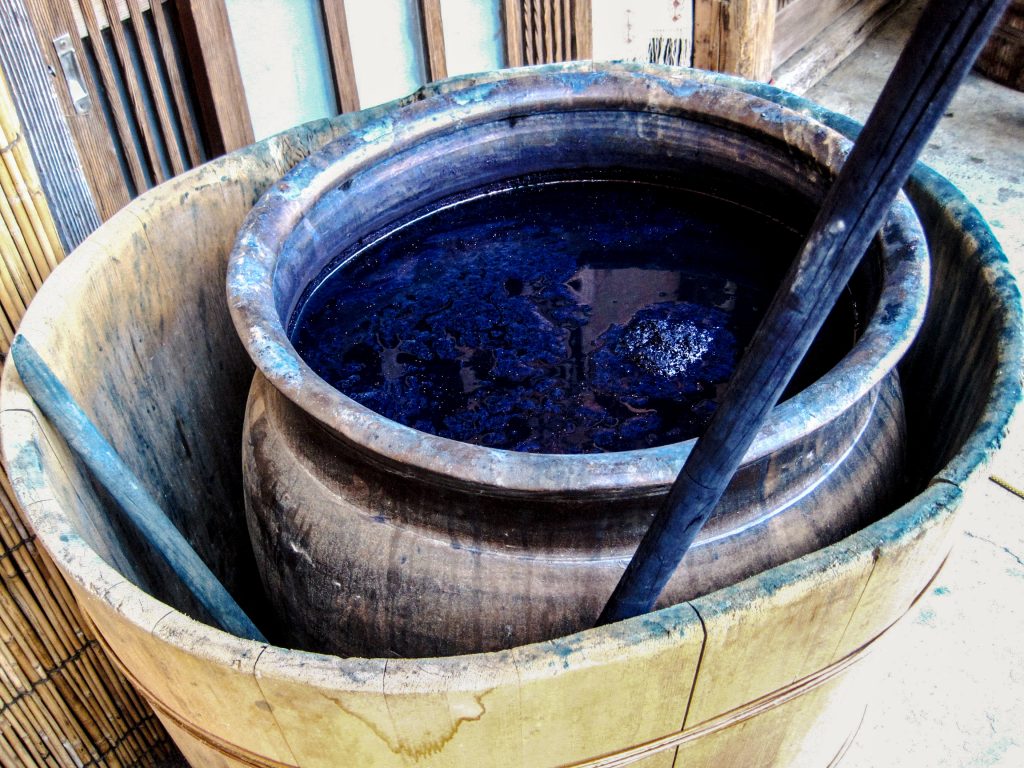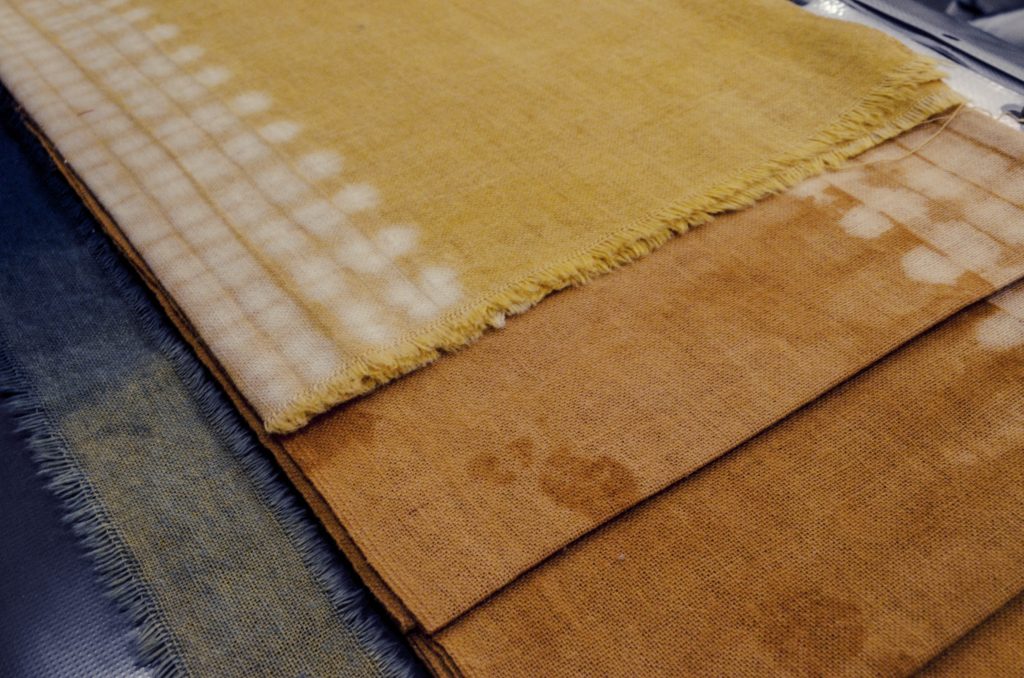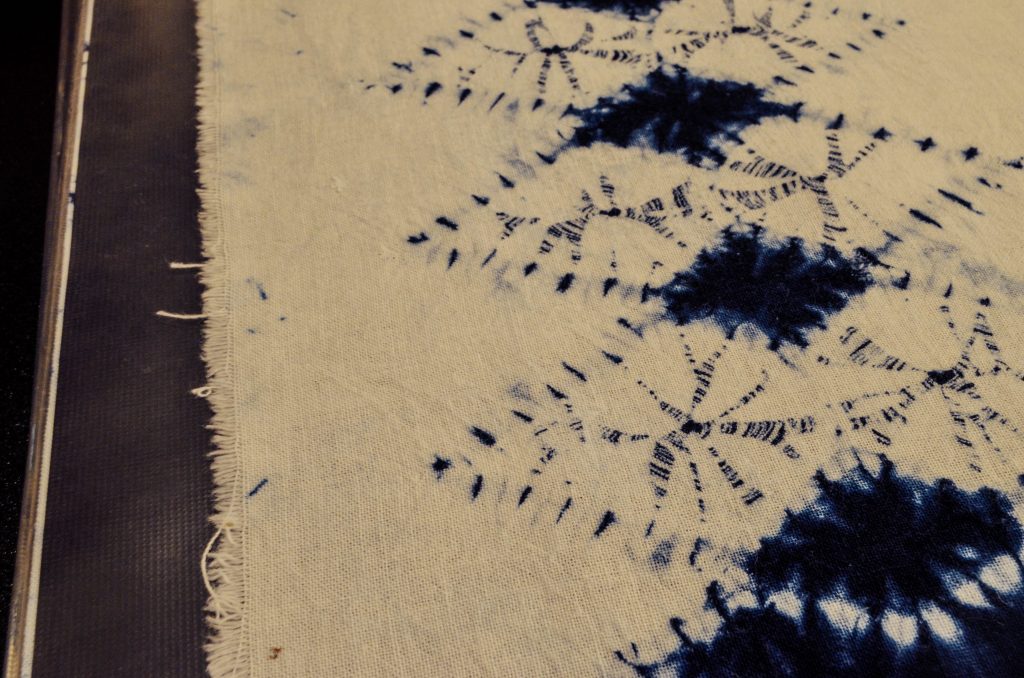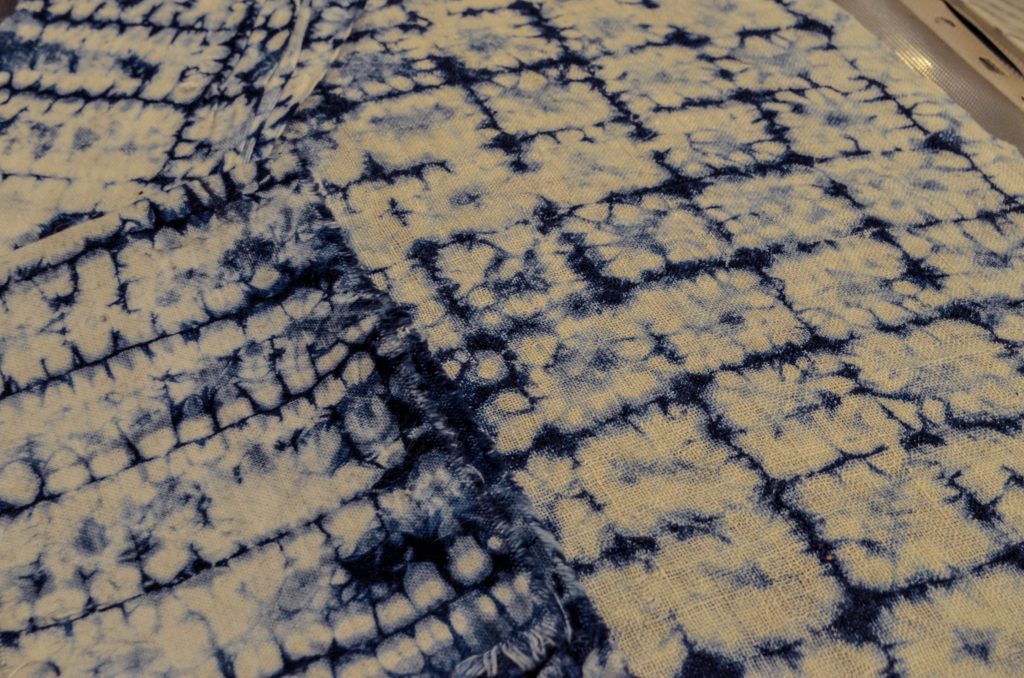Mai Textile Studio: Made with Indigo
Leong Minyi ventured into the garment industry in Singapore after graduating from Nanyang Academy of Fine Arts, experiencing first hand the mindless mass production of clothing, where nothing ever changed. So she packed up her bags, moved to Japan and learned how to make clothes in a way that she believed in. Minyi was taught by a indigo dye master in a remote town, where she came to appreciate the entire process, and the dedication to quality. After coming back to Singapore, she was committed to keep going with this new outlook on making, and educating locals about natural dyeing through her workshops. She is now experimenting with dyeing with food scraps such as onion skins, as well as in the classic indigo dye that she learned in Japan. Read on to discover her experiences in being an independent designer in Singapore, doing things in an alternative way.
You trained in Japan, a country that has a long history with different craft techniques and design philosophies that are now utilised all over the world. How has training in Japan shaped you as a designer and a maker?
In meeting my teacher and other traditional textiles practitioners/masters, I am awed by their dedication to their craft. To do the same thing over and over again till they are masters in their own right. I aspire to do the same. I would like to be still honing and perfecting my craft till I am old.
Being an independent designer in Singapore can be a struggle at times; what is it that keeps you going and doing what you love?
Wonderful support from my family, friends, dedication and passion. Because of the hands on nature of the craft I’m doing, you are not going to continue if you don’t have passion for it.
Do you remember when you got interested in textiles and natural dyes in the first place and what about them intrigues you so much?
I was already interested in textiles during my diploma/degree years in NAFA. I only found out about natural dyes when I met my teacher, Bryan. He was the best teacher I could ever find; kind and generous in sharing his knowledge with everyone. That was when I really got interested in natural dyes, it was a whole new world, something you won’t be able to learn in Singapore. It was the thought that I could create something from “nothing”. From plant-thread-fabric (weaving), plant-dye (dyeing). Then with techniques such as shibori/ katazome, you are able to create your own designs/patterns on those fabrics.
Why did you end up starting your own design studio in Singapore and how has it been?
I wanted to introduce and spread the art in Singapore. At the same time, I wanted a space for me to be able to dye and practice the art. It has been a struggle, there are both good and bad experiences. I just try to stay as positive as I can.
What is your favourite part of making?
Creating with my hands comes first. Followed closely by unstitching shibori pieces or washing of the paste resist on katazome pieces and seeing the end results.
Where do you source textiles and what kind of fabrics do you favour?
They are sourced from both Singapore and Japan. I favour natural fabrics especially linens and cottons as they dye really well with indigo.
The step by step design process on your website is lovely, do you feel educating the customers about the is important and has it been fruitful?
I do think it is important as I do take great efforts of make sure the stitch work and dyeing are of quality. It is also a reason why some items are priced higher. Some customers are appreciative of what goes into the end product, and they do become repeat customers. But of course, there are exceptions as well. Some customers do not care for it; they want it cheap and fast. Some do like it, but when they are told that the products are designed and made in Singapore, they do not care for it even if you really did spend 2 weeks working on the piece.
Do you design any patterns yourself and if so, what inspires you?
There are many techniques to create different patterns. I use different techniques to create my designs. I don’t have a specific inspiration. They are basically things I see every day and what I suddenly remember at times.
What kind of consumers buy and are interested in your products?
They are women in their late 30s to 60s. They are all working adults who have travelled widely and already know about traditional textiles.
It was the thought that I could create something from "nothing"
Is there a creative collaboration you would like to embark on and if so, with who and what kind?
I would collaborate with urban farmers to grow some plants suitable for natural dyeing. Plants like indigo work well in a tropical climate. I would also love to research plants suitable for growing and dyeing in Singapore. Another idea I have in mind; from farm to table to clothes. A menu using both locally grown and bought vegetable/fruits which produce colours suitable for dyeing. The leftover shells, seeds, skin from the vegetable/fruits are then used to dye fabrics which people can take home.
What are your hopes and wishes for your design studio for the next 10 years?
I do hope by then I would be able to have a space with a small team working on the next exhibition and upcoming workshops.
I was wondering if you could tell me more about the textiles.
I use only natural materials, eg. cotton, linen, bamboo, silk, wool. Any cellulose or protein fibers will work well with natural dyes. With the aid of mordants and modifiers, they enhance the colour and light-fastness of the dyes, making the colours last for a very long time. Polyester/man-made fabrics do not have any affinity with natural dyes. With these fabrics, you have to use synthetic dyes.


